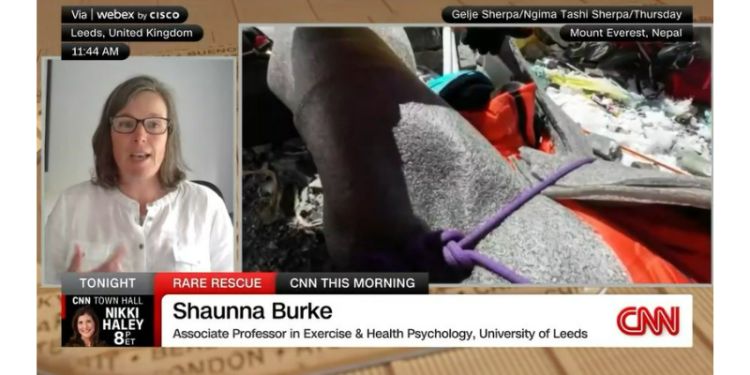Dr Shaunna Burke interviewed by CNN about the heroic rescue of a Malaysian climber

The piece by Brian Todd tells the story of a heroic climbing guide, Gelje Sherpa, who rescued the Malaysian climber from Everest "Death Zone".
Gelje Sherpa spotted the stranded climber clinging to a rope when ascending the mountain.
After convincing his group to abandon their quest to reach the summit, he carried the climber 900ft back down the mountain. A helicopter then airlifted him to basecamp.
Dr Shaunna Burke, Associate Professor in Exercise and Health Psychology, climbed Everest in 2005.
She explains why the rescue was so remarkable.
At 8000m, in the Death Zone, the human body can no longer climatise. The body uses up its store of oxygen faster than it can be replenished and so the body starts to shut down, muscles start to atrophy, hallucinations can occur, and ultimately the body is starved of oxygen.
310 people have sadly lost their life climbing Everest.
In high altitudes, the chance of coming down with high altitude sickness becomes much higher.
Climbers have also known to experience pulmonary edema – fluid in the lungs – and hallucinations such as hearing orchestras or seeing companions that aren’t there.




